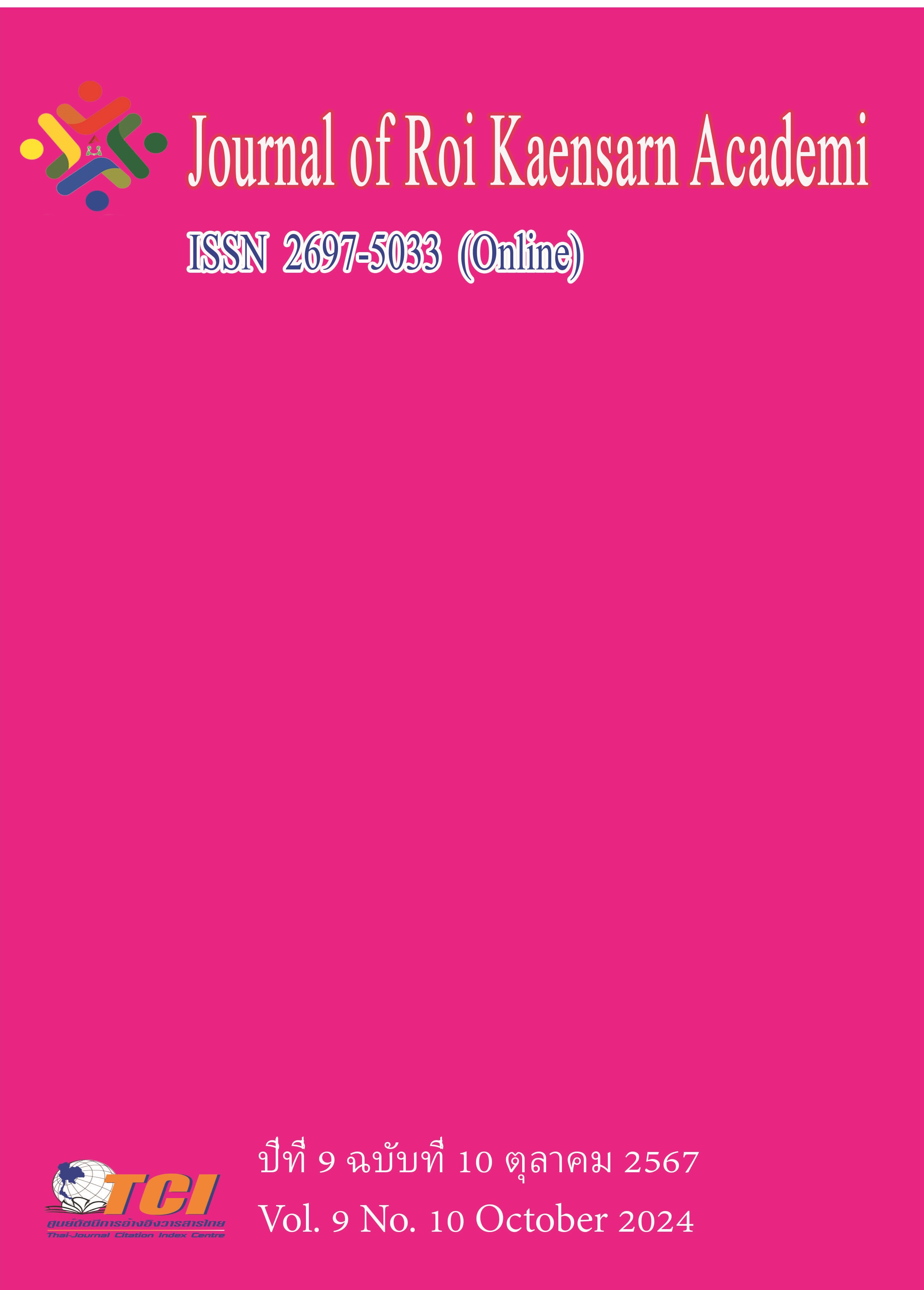แนวทางเชิงกลยุทธ์ของศูนย์สุขภาพและความงามในประเทศไทย เพื่อกระตุ้นพฤติกรรมการใช้บริการของลูกค้า
Main Article Content
บทคัดย่อ
บทความนี้มีวัตถุประสงค์เพื่อ (1) ศึกษาและเปรียบเทียบกลยุทธ์การดำเนินงานของศูนย์สุขภาพและความงามในประเทศไทย จำแนกตามข้อมูลส่วนบุคคล ของผู้บริหารศูนย์สุขภาพและความงาม และ (2) พัฒนาแนวทางเชิงกลยุทธ์ของศูนย์สุขภาพและความงามในประเทศไทย เพื่อกระตุ้นพฤติกรรมการใช้บริการของลูกค้า เป็นการวิจัยแบบผสมผสาน ประกอบด้วย การวิจัยเชิงปริมาณ กลุ่มตัวอย่างเป็นผู้จัดการของศูนย์สุขภาพและความงาม จำนวน 321 คน เครื่องมือที่ใช้เป็นแบบสอบถาม วิเคราะห์ข้อมูลโดยหาค่าเฉลี่ย ส่วนเบี่ยงเบนมาตรฐาน ทดสอบ t-test และ One-Way ANOVA และการวิจัยเชิงคุณภาพ ด้วยสัมภาษณ์เชิงลึกกับผู้เชี่ยวชาญ จำนวน 15 คน และทำการวิเคราะห์เนื้อหา
ผลการวิจัยพบว่า (1) กลยุทธ์การดำเนินงานของศูนย์สุขภาพและความงามในประเทศไทย ตามการรับรู้ของผู้จัดการของศูนย์สุขภาพและความงาม โดยรวมอยู่ในระดับมาก และผู้จัดการของศูนย์สุขภาพและความงามที่มีข้อมูลส่วนบุคคล แตกต่างกัน มีกลยุทธ์การดำเนินงานของศูนย์สุขภาพและความงาม แตกต่างกัน และ (2) แนวทางเชิงกลยุทธ์ของศูนย์สุขภาพและความงามในประเทศไทย เพื่อกระตุ้นพฤติกรรมการใช้บริการของลูกค้า ได้แก่ การเจาะกลุ่มลูกค้าที่มีความต้องการเฉพาะด้าน การเข้าถึงลูกค้าทุกช่วงวัย เผยแพร่ข้อมูลผ่านสื่อสังคมออนไลน์ สร้างฐานข้อมูลลูกค้าและใช้ข้อมูลเชิงลึก การเพิ่มทางเลือกด้านผลิตภัณฑ์ เตรียมความพร้อมสำหรับอนาคต สร้างภาพลักษณ์และมีการสื่อสารอย่างมีประสิทธิภาพ
Article Details
References
Al-Hashimi, M., & AlDhari, S. M. (2019). Factors influencing consumer behavior of women within the SPA & beauty sector: A case in the Kingdom of Bahrain. Journal of Business and Retail Management Research, 13 (4), 289-302.
Choi, J. W., Yoo, H. G., Kwon, Y. E., & Kwon, L. S. (2019). Women's skin care factors affecting Korean women's skin and beauty industry market. The Journal of Industrial Distribution & Business, 10 (8), 25-32.
Coulter, M. A. (2008). Strategic management in action (4th ed.). New Jersey: Pearson Education.
David, F. R. (2009). Strategic management concepts and cases (13th ed.). Upper Saddle River, NJ: Pearson Prentice Hall.
Ekinil, G., Petrenko, A., & Provotorina, V. (2022, May). Trends in the development of beauty services in the infrastructure of tourist and hotel complexes in the rostov region. In International Scientific Conference on Agricultural Machinery Industry “Interagromash” (pp. 1036-1046). Cham: Springer International Publishing.
Fajartriyani, A. P., Raharja, S. U. J., & Dai, R. M. (2020). Competitive strategies of Indonesian skincare clinics: Study on Rafa Health and Beauty Lifestyle, Bandung, Indonesia. Review of Integrative Business and Economics Research, 9, 80-87.
Fosu-Whyte, K. (2018). Business analysis & growth strategy for At heart beauty concepts. Ashesi University.
Jham, V., & Malhotra, G. (2019). Relationship between ethics and buying: a study of the beauty and healthcare sector in the Middle East. International Journal of Services Technology and Management, 25 (1), 36-52.
Kim, Y. J., Lee, J. H., Lee, S. G., & Lee, H. H. (2021). Developing sustainable competitive strategies in the beauty service industry: a SWOT-AHP approach. Sustainability, 13 (19), 10852.
Kotler, P. (2003). Marketing insights from A to Z: 80 concepts every manager needs to know. New York: John Wiley & Sons.
Kotler, P. & Keller, K. (2009). Marketing management. Global Edition. Upper Saddle River: Pearson Education.
Kuan, N. Y., Yang, F. C., & Fei, L. K. (2020). An application of quantitative strategic planning matrix for small business: A case of a beauty salon. Global Business & Management Research, 12 (2), 24-34.
Kurnianingrum, A. F., & Hidayat, A. (2020). The influence of service quality and price perception on consumer trust and revisit intention at beauty care clinic in Indonesia. Archives of Business Review–Vol, 8 (6). 268-281.
Kerin, R. A. (2007). Strategic marketing problems: Case and comment. New York: Pearson Prentice Hall.
Lee, Y. J., & Lee, J. H. (2020). The effects of middle-aged women's beauty health care behaviors on physical respect and psychological happiness. Journal of the Korean Applied Science and Technology, 37 (6), 1605-1618.
Majeed, A., Ahmed, I., & Rasheed, A. (2022). Investigating influencing factors on consumers’ choice behavior and their environmental concerns while purchasing green products in Pakistan. Journal of Environmental Planning and Management, 65 (6), 1110-1134.
Pawar, A., & Pawar, A. (2023). Crafting effecting marketing strategies for global success in the beauty and cosmetic industry. IJO-International Journal of Business Management, 6 (12), 14-24.
Pudaruth, S., Juwaheer, T. D., & Seewoo, Y. D. (2015). Gender-based differences in understanding the purchasing patterns of eco-friendly cosmetics and beauty care products in Mauritius: A study of female customers. Social responsibility journal, 11 (1), 179-198.
Schermerhorn, J. R. (2002). Management (7th ed.). New York: John Wiley.
Thompson, A., & Strickland, A. J. (2003). Strategic management concepts and cases. Boston: Irvin McGraw-Hill.
Walker, O. C., & Mullins, J. W. (2008). Marketing strategy: A decision-focused approach. New York: McGraw-Hill Higher Education.
Wheelen, T. L., & Hunger, J. D. (2012). Strategic management and business policy: Toward global sustainability (4th ed.). New Jersey: Pearson Education.
Yamane’, Taro. (1973). Statistics an introductory analysis. New York: Harper & Row.Translate
